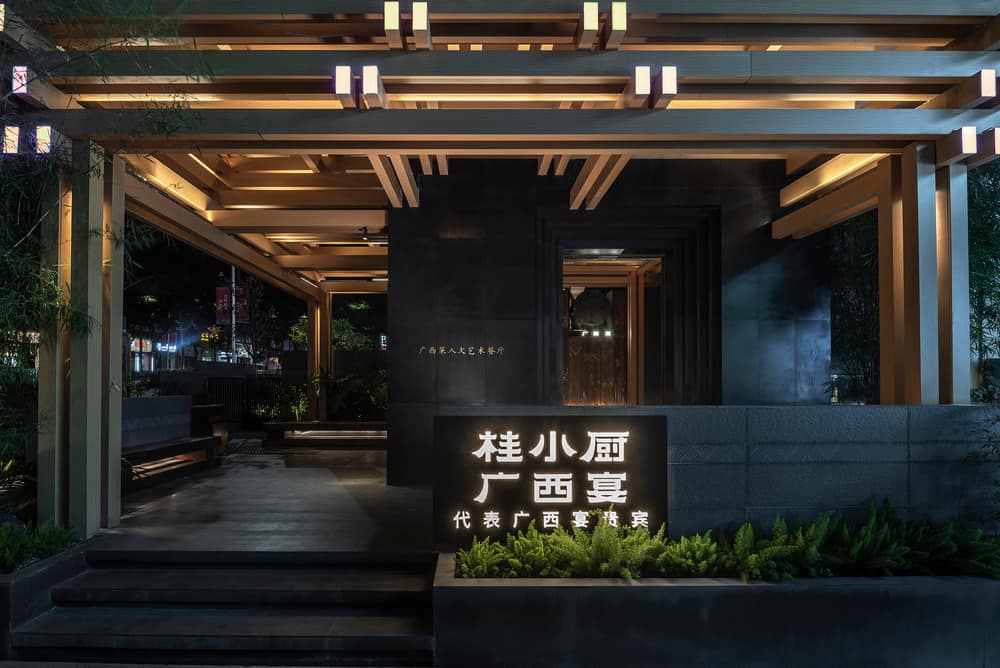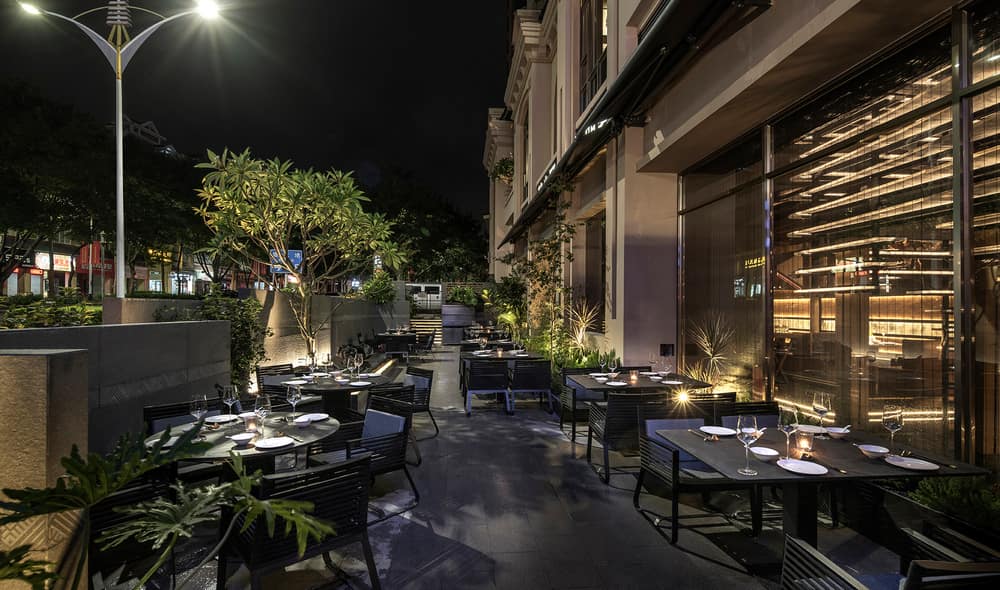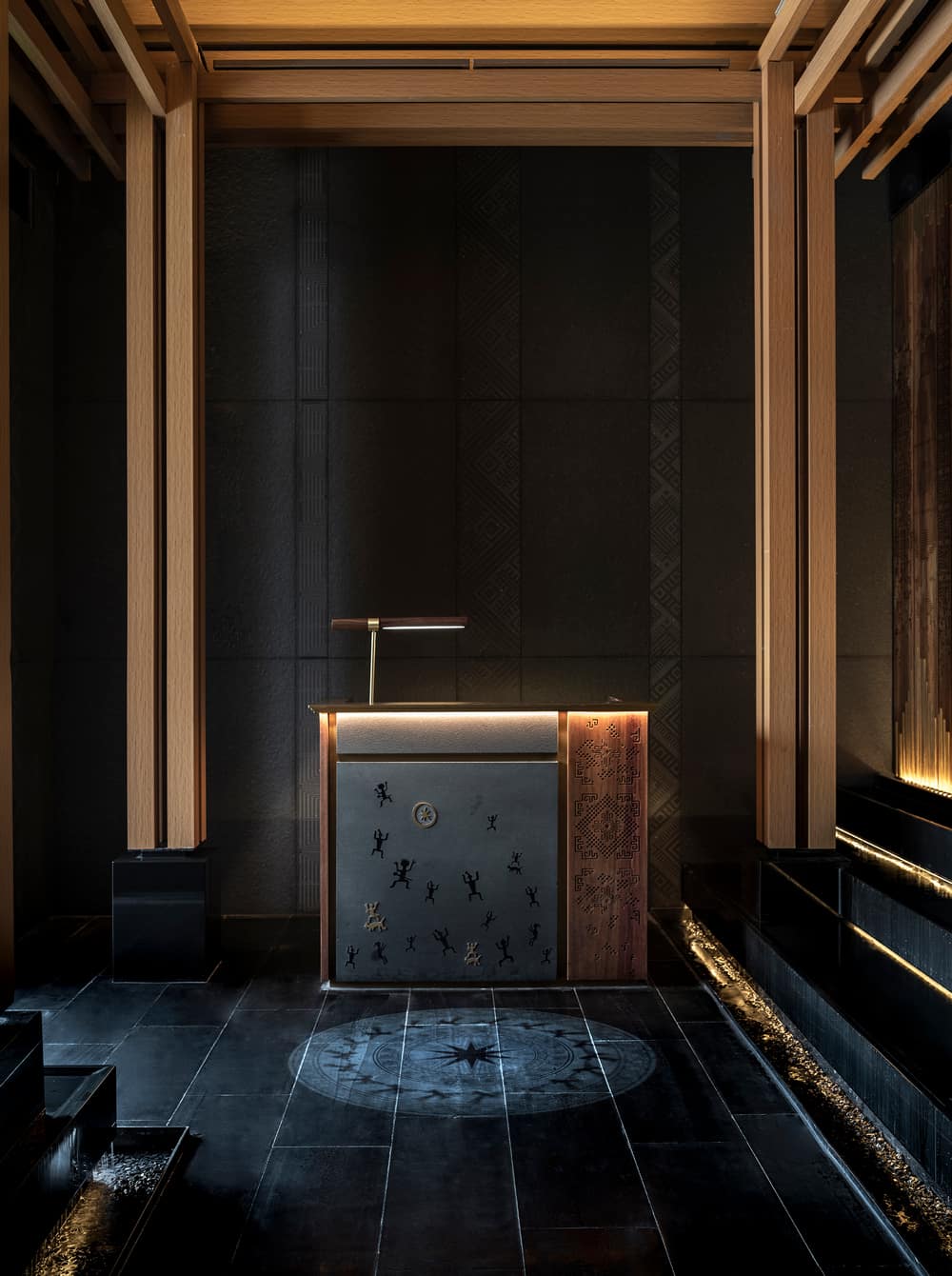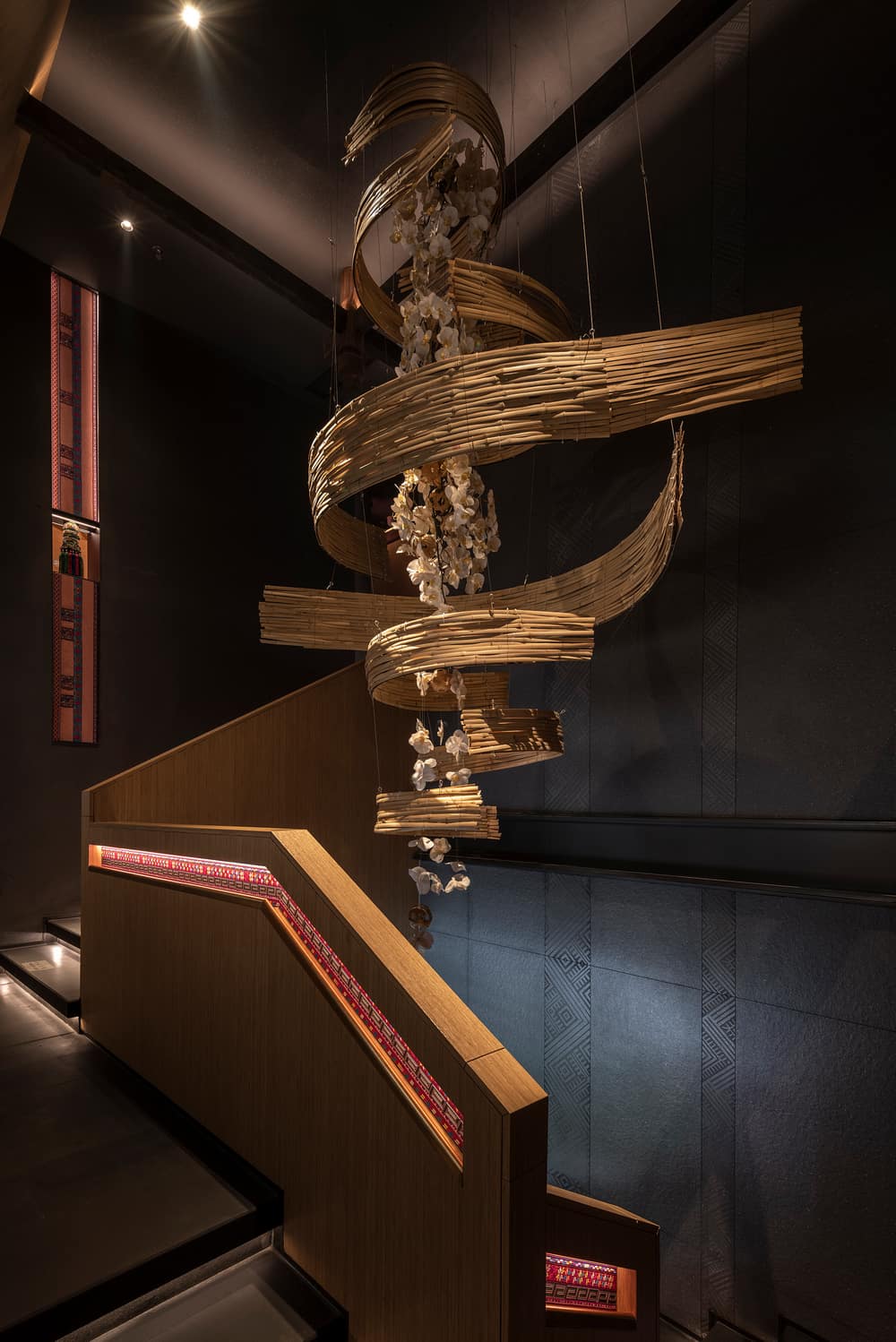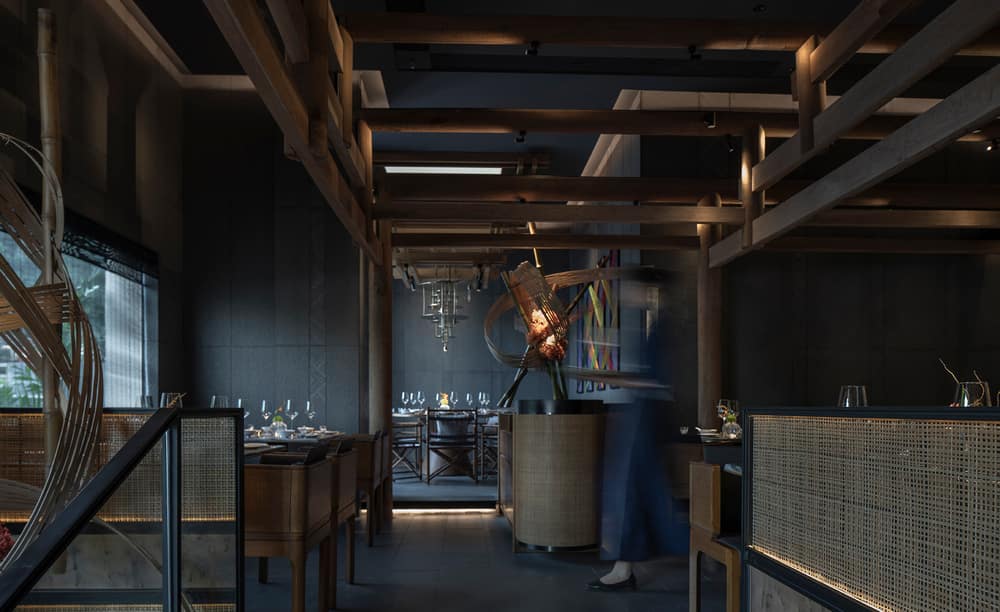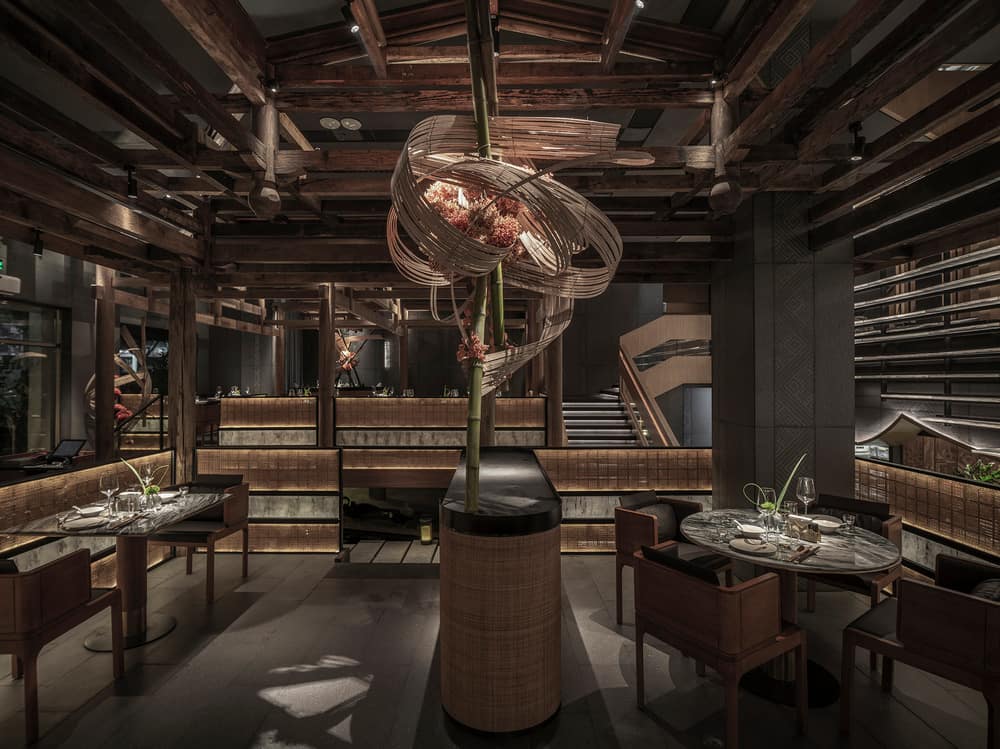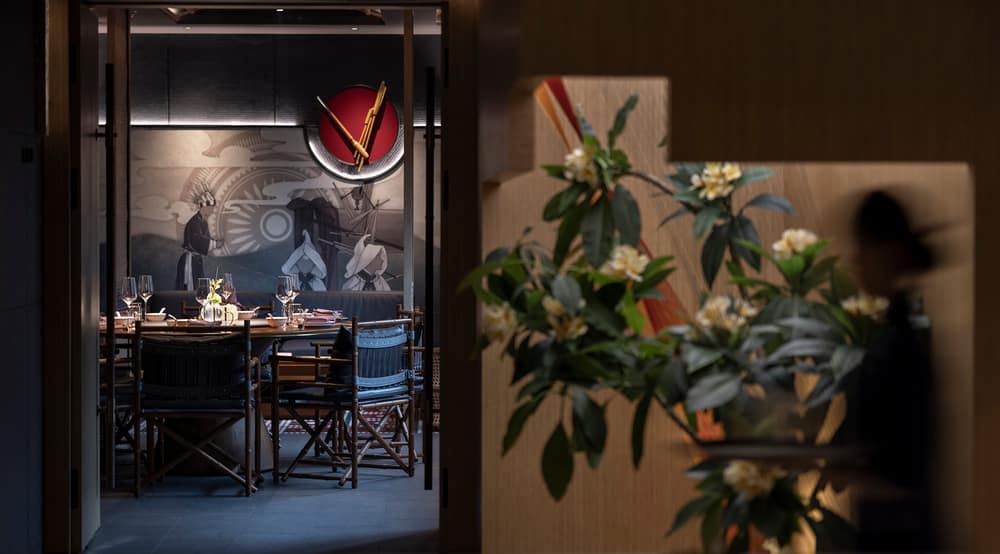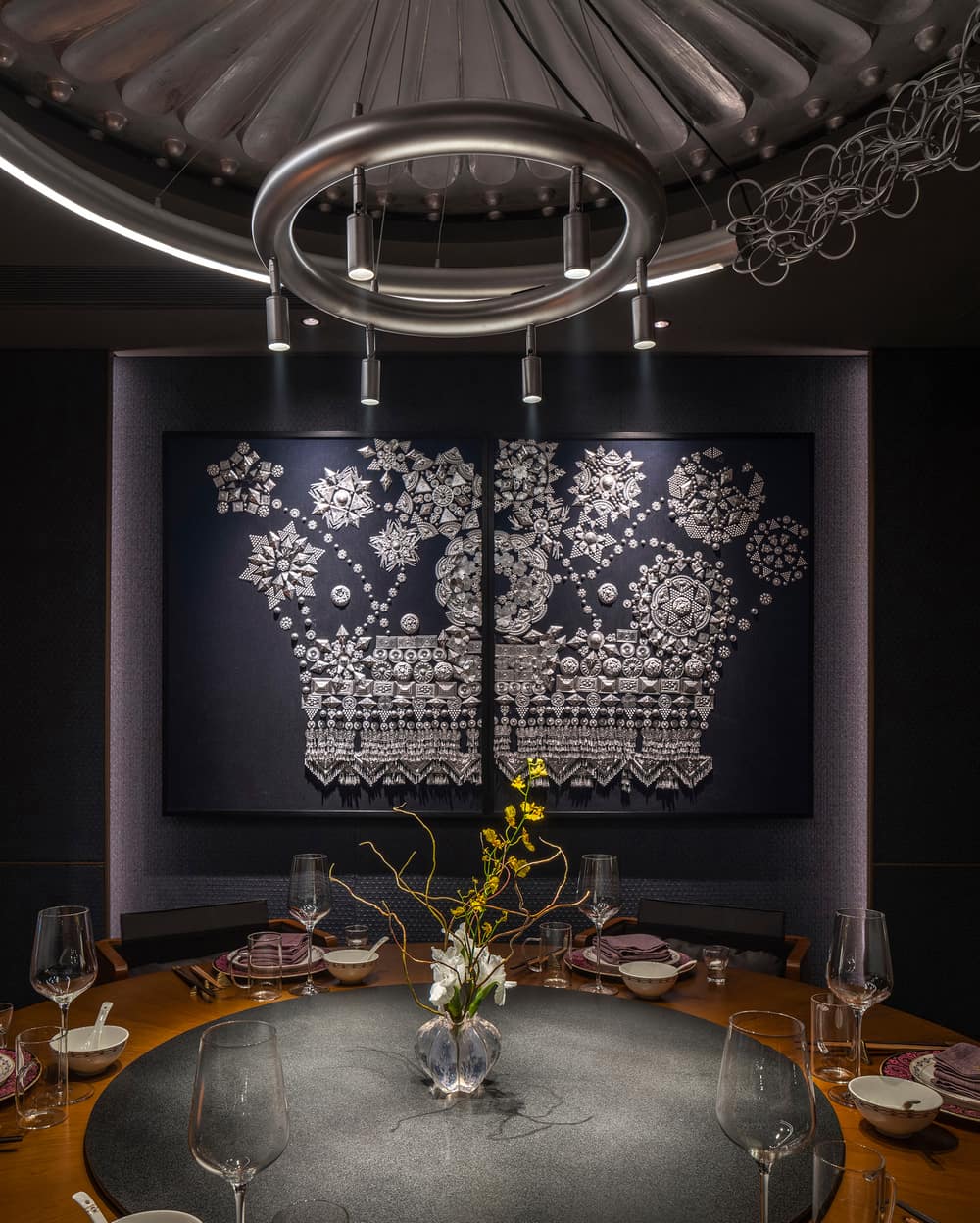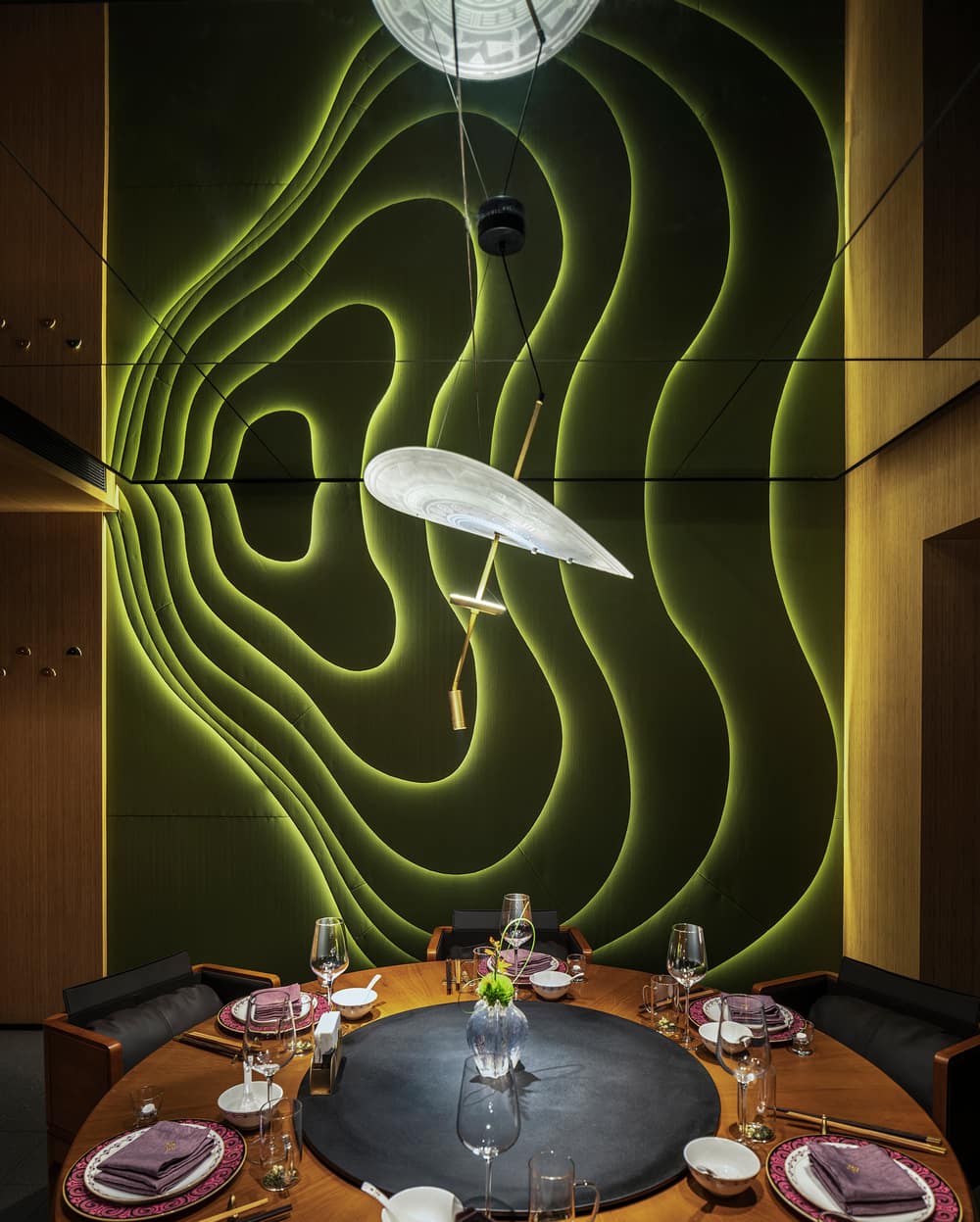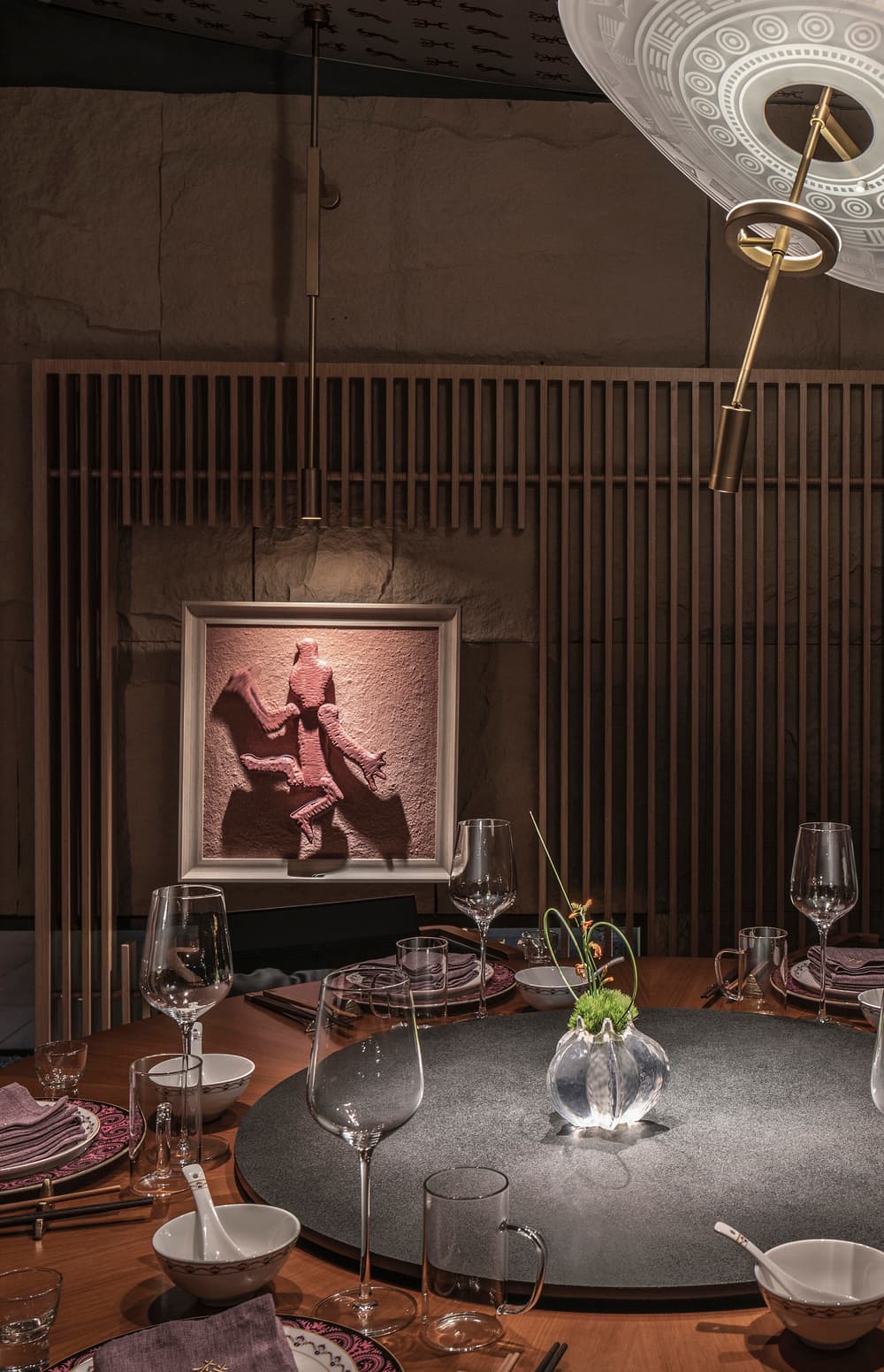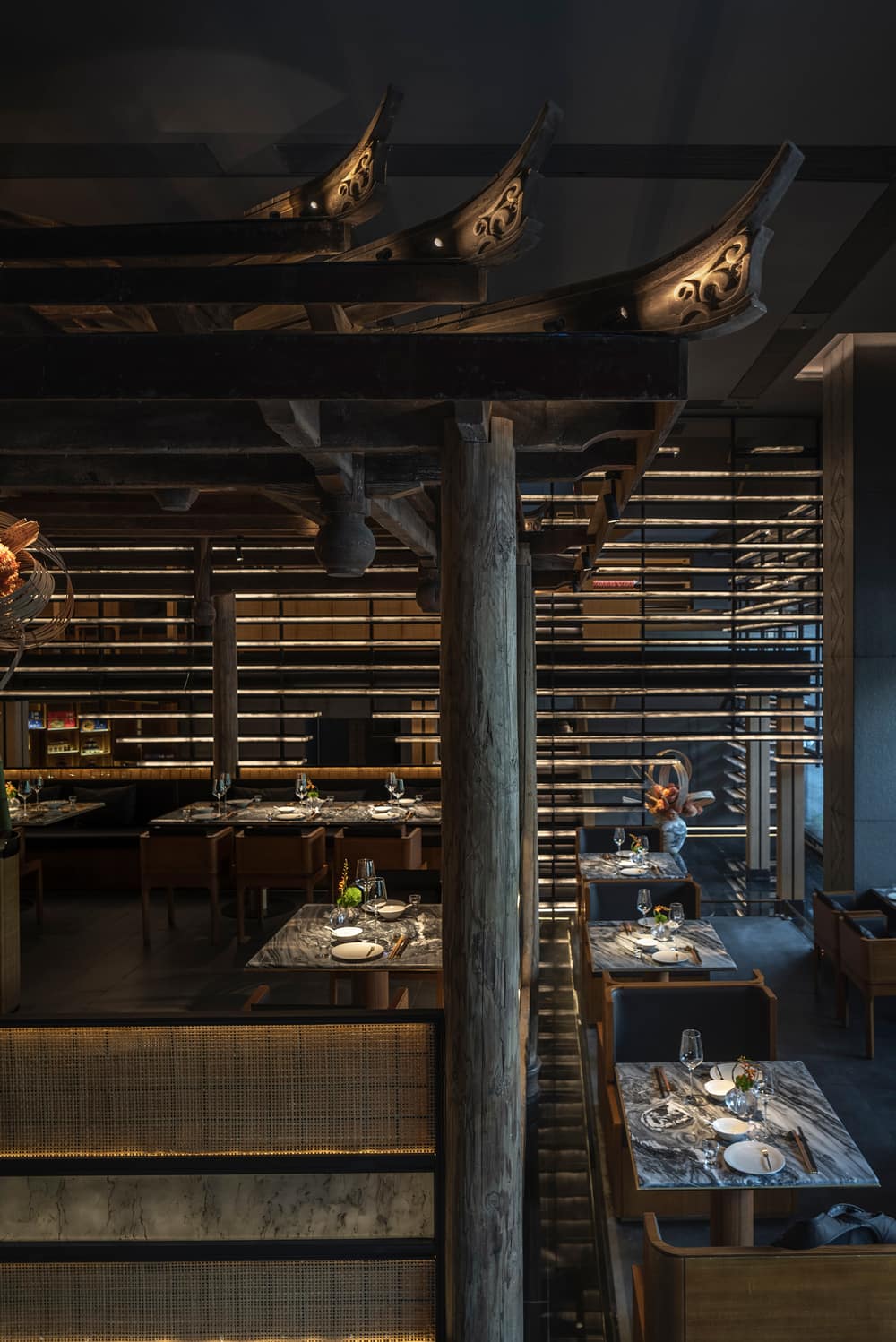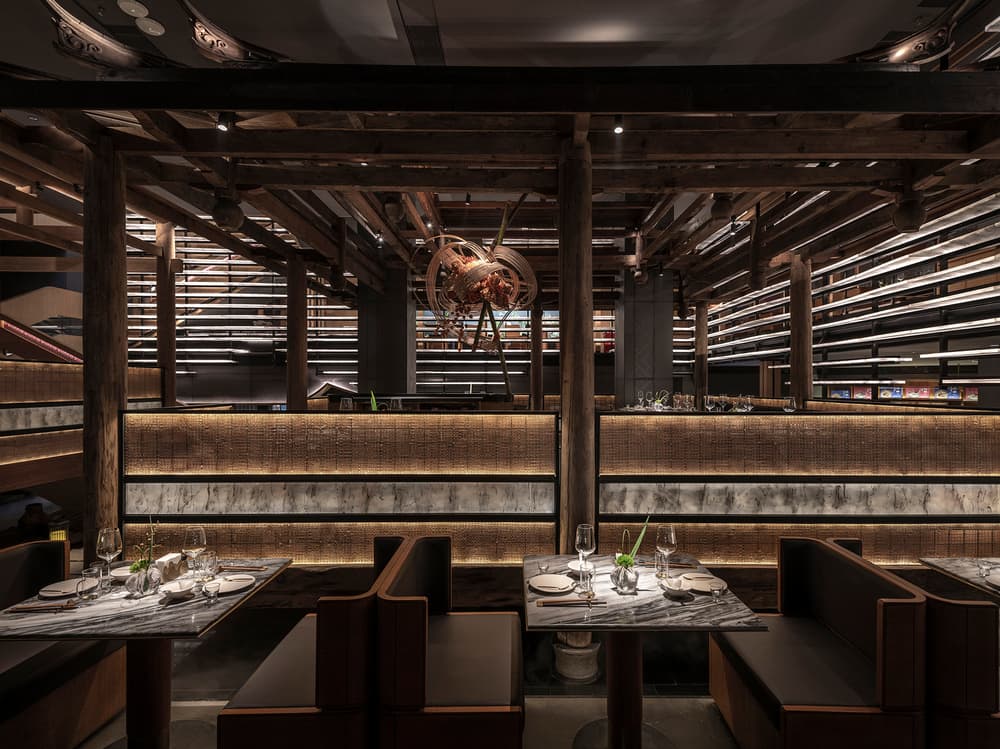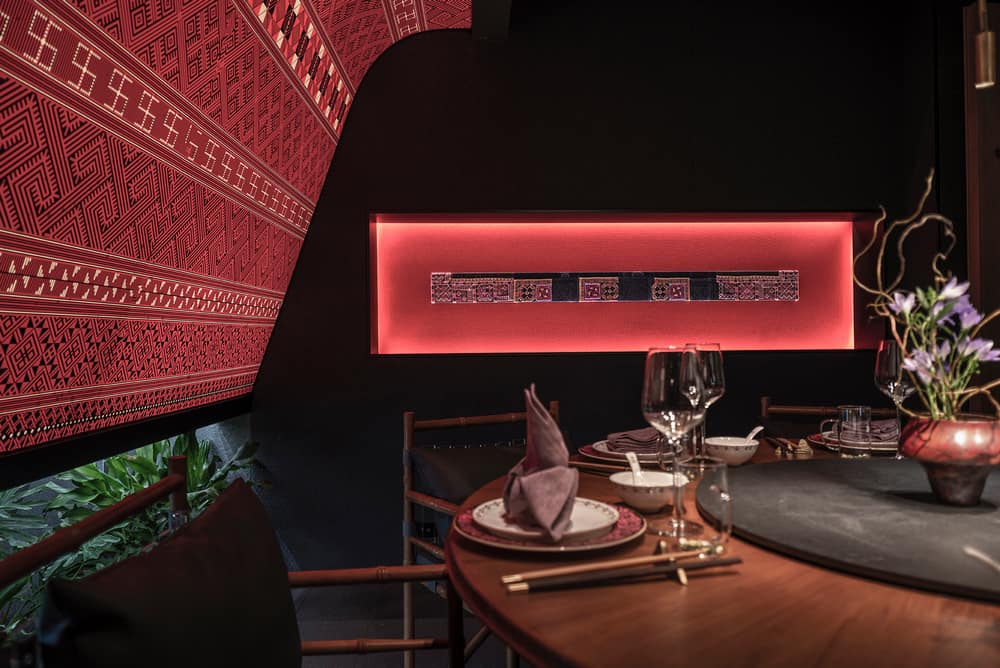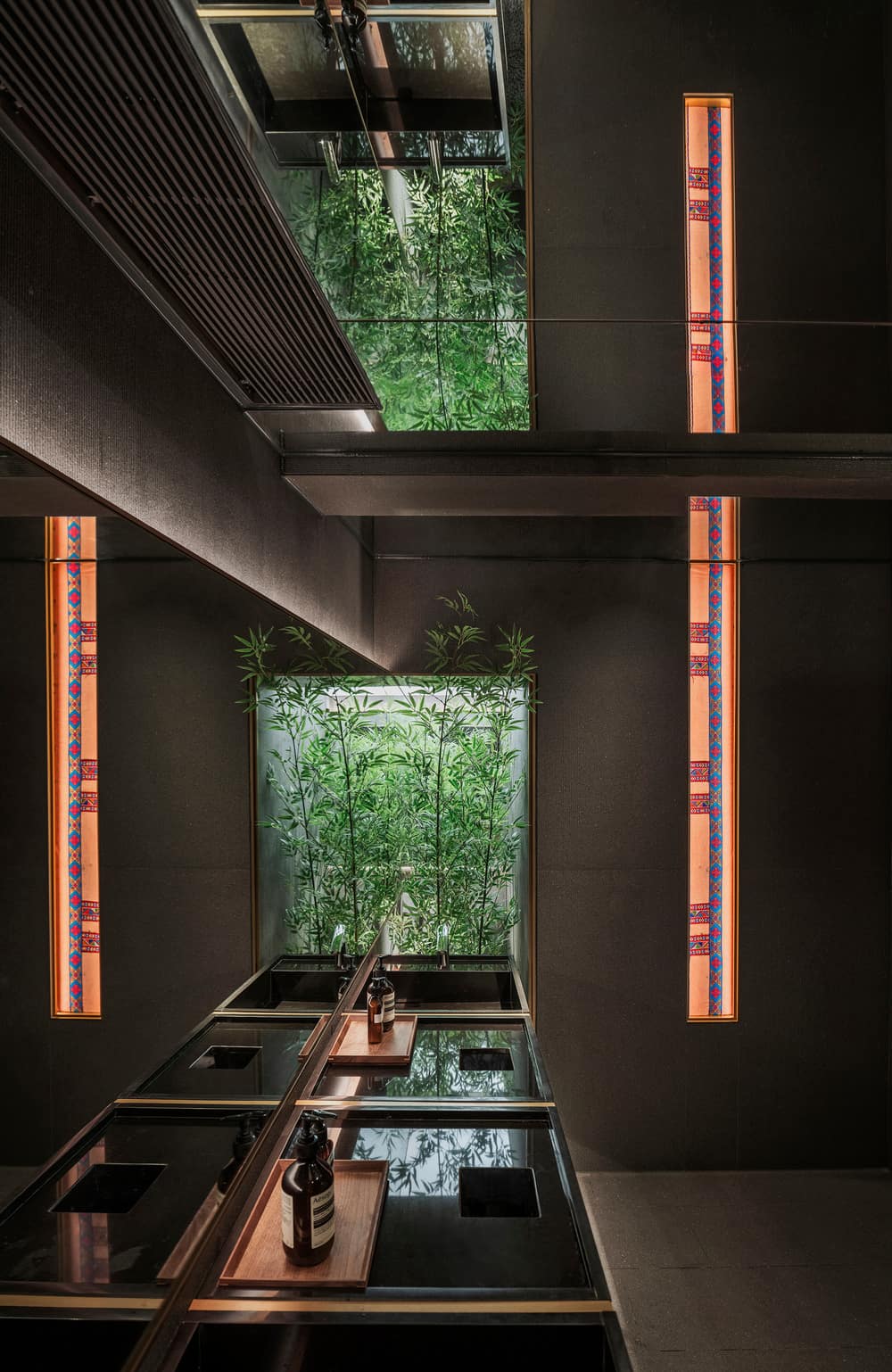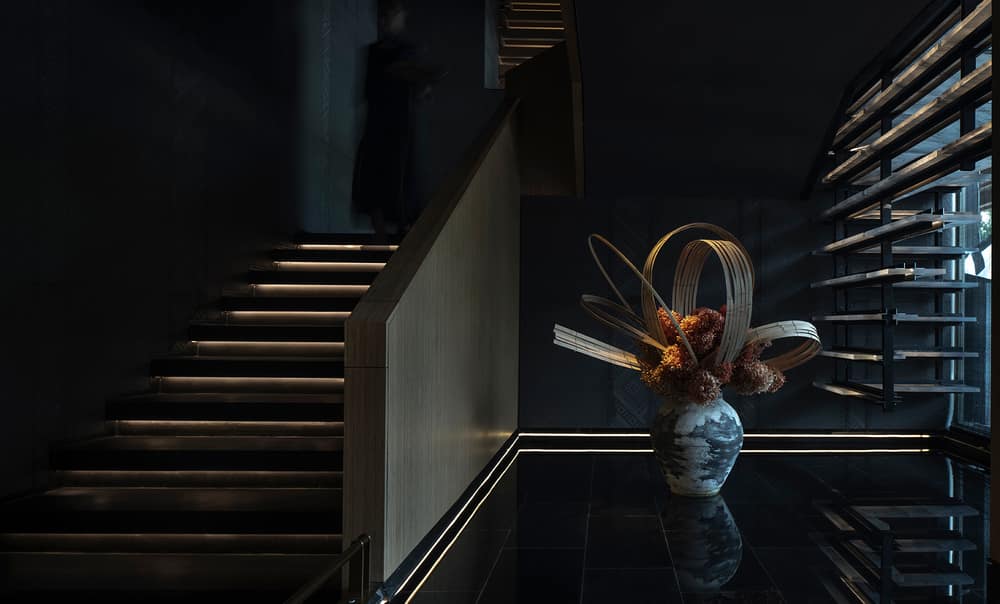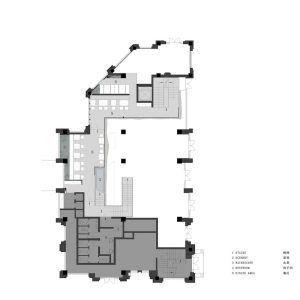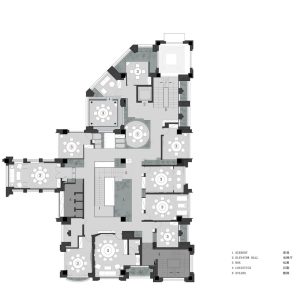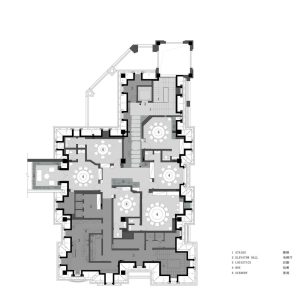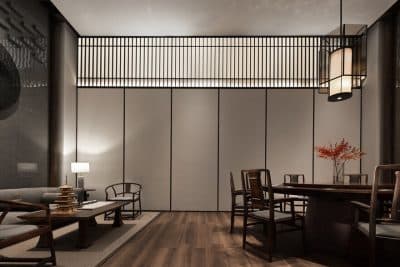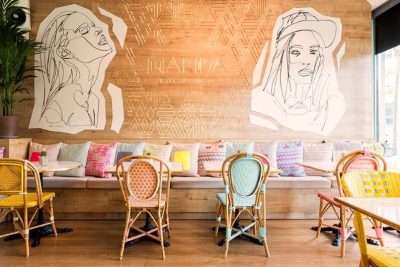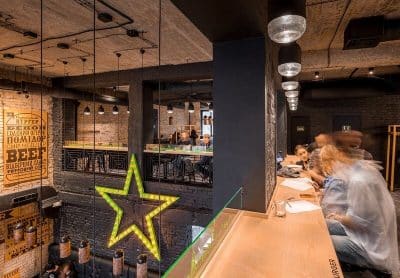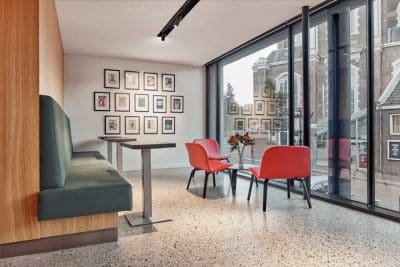Project Name: Guangxi Yan Restaurant
Design Firm: Wuxing Youxing Space Design
Chief Designers: Wei Zhixue, Gao Yuan
Design Team: Xie Kaiming, Wu Guibi, Pan Ping, Jiang Renpu, Huang Lei, Yu Yuanhui, Xu Peng, Qian Zhendie, Chen Wenjie, Liu Sicen, Zhang Duo, Sun Zheng
Location: Nanning, Guangxi, China
Area: 1,700 Square Meters
Completion Time: September 2021
Photographer: Pan Jie
Every Chinese has a similar version of what a perfect landscape looks like: above a vast expanse of misty and rippling waters and with lush forests surrounded, people fishing and singing at sunrise and dusk. To experience this in real world, there is nowhere else more appropriate than Guangxi.
The fascinating landscape of Guangxi is an exclusive unparalleled gift from Mother Nature. Hidden behind mountains, Guangxi, which used to be a part of Baiyue region (the south of China in a broad sense) in ancient times, is renowned for its spectacular scenery. In this incredible land, abundant hills and mountains sprawl in the south and five gigantic peaks meander in the north. Towering and overlapping hilly terrains intertwine with rivers flowing among and through. The renowned Lijiang River, which resembles a jade belt among mountain ranges, extends 164 km through Guilin and Yangshuo, contributing a magnificent landscape. As a poet described, “As the boat sailing on green waves, I’m touring in a fascinating painting”, the aesthetic view of Lijiang River has been highly praised for over a thousand years.
Living in skyscrapers, modern people are easily to forget the breathtaking land beneath our feet. The project, Guangxi Yan restaurant, is a miniature version of “mysterious Guangxi” that brings the marvelous natural landscape to the bustling center of city, entertaining guests in a welcoming gesture.
The Guangxi Yan restaurant adopts traditional Guangxi cultural elements as the design thread, which unifies the overall spatial design. Numerous representative local elements are presented in the space after systematic concentration and artistic refinement. The journey from Guangxi landscape to the dinner table reveals distinctive regional features, and enables diners to perceive the brand’s values in the immersive ambience.
The facade of the restaurant resembles a sumptuous drum tower, a representative topology of local traditional architecture. When entering the hall, guests are greeted by two roofless Zhuang houses featuring mortise and tenon structures. This roofless design is derived from the tradition of Zhuang people, who invite honorable guests, relatives and friends to join the banquet held in newly roofed and built house for celebration. The hall is where the Guangxi Yan unveils its prelude.
As far as the sight reaches, Guangxi elements are everywhere throughout the space. The landscape of Lijiang River, rock paintings of Hua Mountain, Longji Rice Terraces, Zhuang silver ornaments, bronze drums, Zhuang brocade, Zhuang tie-dye, Zhuang embroidered balls, Zhuang People’s March 3rd Festival, those elements seem to be independent from one another and each has its unique system in separate spaces, yet they remain connected in the ethnic culture of Guangxi. Behind the door of each private dining room, there is a unique mysterious realm revealing diverse Guangxi culture.
Modern expressions are adopted to translate traditional elements, which is the key of the design. The partition in the atrium extends from the first floor to the third floor, producing a magnificent effect. Made of translucent, ink-wash resin materials, it mimics local karst topography characterized by undulating mountains and winding rivers. As the line of sight extends, the partition seems to undulate as rolling hills and flowing rivers. The micro mountain and water landscapes, which are elaborately designed yet arranged in a seemingly random way, echo the partition, whilst also showing the fusion of the real and the virtual and bringing in nature. The overall design recalls a picture of distant mountains, gurgling water, lush trees and grey stones on the land of Guangxi. With twisting road, stream, bridge and house elements around, the space portrays a picture that people hold a great banquet to celebrate the completion of a new residence. The objects and emotions resonate with each other.
Traditional elements are showcased in an unconventional and unique form, such as the sculpture that depicts a distinctive scene, the characteristic pattern of the Zhuang brocade embedded in the staircase handrails, the curtain decorated with Zhuang silver ornaments, the bronze drum-shaped lighting fixtures, the thematic art installations on the wall, and the traditional symbols inlaid on wood and carved on stones, all of which well blend the regional ethnic features with Oriental ambience.
Traditional scenes, such as hydrangea flowers that imply warm welcome, bronze drum worship ceremony and the Gexu Singing Festival held on March 3rd, are extracted and translated into scenes through abstract expressions, so as to inherit local millennia-old cultural heritage and show the pride and glory of the Zhuang minority.
Guangxi Yan restaurant creates a splendid space empowered by engaging natural landscape and rich culture of Guangxi. Local scenery, history and humanistic aesthetics nurtured by beautiful landscapes are converted into dining scenes. With an innate purity and primitiveness, this space is like a hidden treasure waiting for guests to explore and unveils its beauty.

